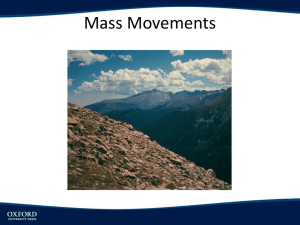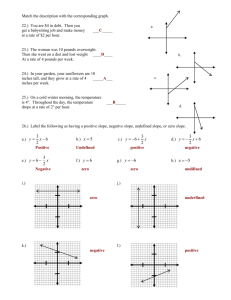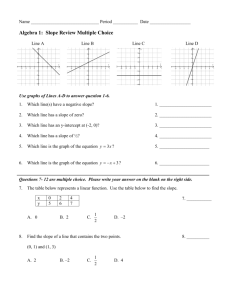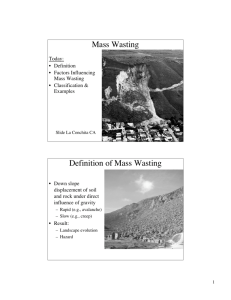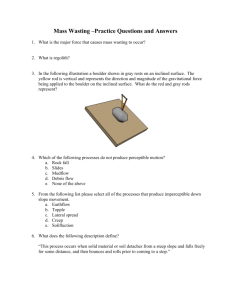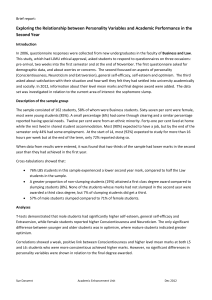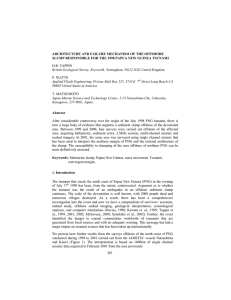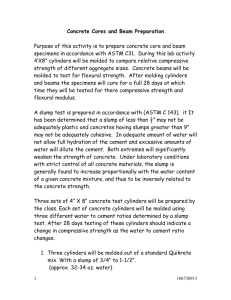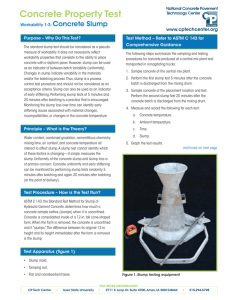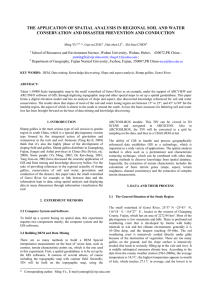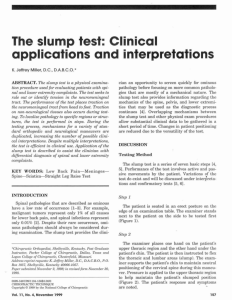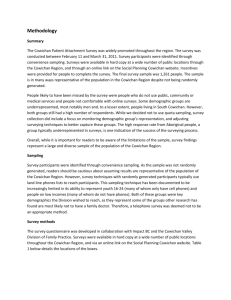Alex-Semple-Abstract28
advertisement
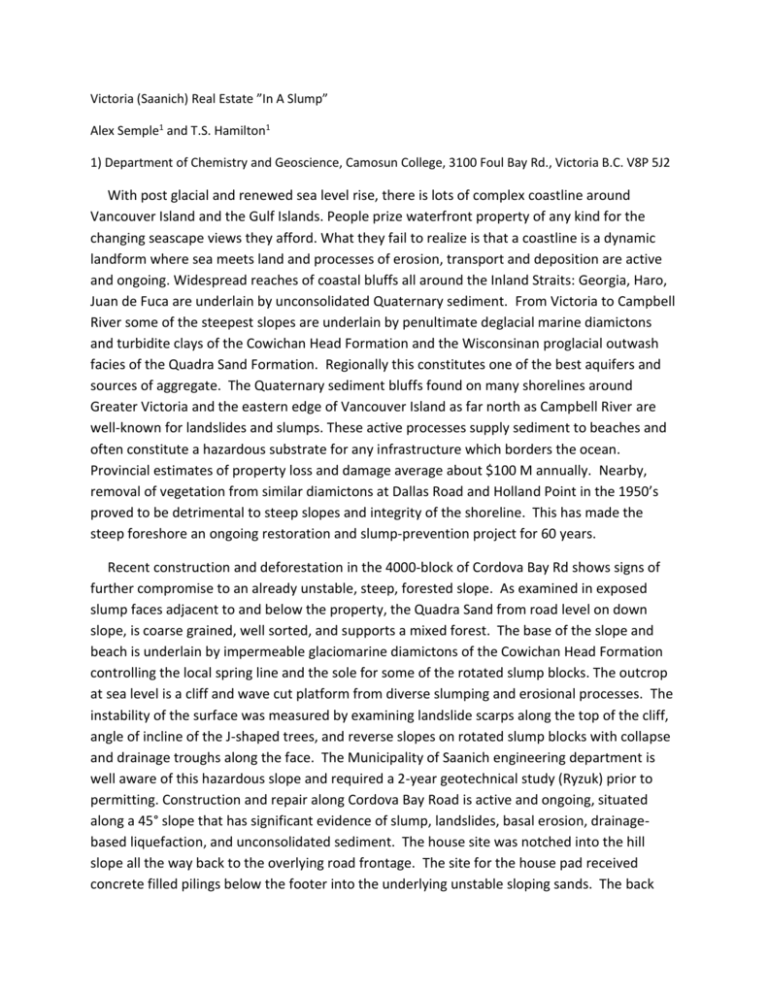
Victoria (Saanich) Real Estate ”In A Slump” Alex Semple1 and T.S. Hamilton1 1) Department of Chemistry and Geoscience, Camosun College, 3100 Foul Bay Rd., Victoria B.C. V8P 5J2 With post glacial and renewed sea level rise, there is lots of complex coastline around Vancouver Island and the Gulf Islands. People prize waterfront property of any kind for the changing seascape views they afford. What they fail to realize is that a coastline is a dynamic landform where sea meets land and processes of erosion, transport and deposition are active and ongoing. Widespread reaches of coastal bluffs all around the Inland Straits: Georgia, Haro, Juan de Fuca are underlain by unconsolidated Quaternary sediment. From Victoria to Campbell River some of the steepest slopes are underlain by penultimate deglacial marine diamictons and turbidite clays of the Cowichan Head Formation and the Wisconsinan proglacial outwash facies of the Quadra Sand Formation. Regionally this constitutes one of the best aquifers and sources of aggregate. The Quaternary sediment bluffs found on many shorelines around Greater Victoria and the eastern edge of Vancouver Island as far north as Campbell River are well-known for landslides and slumps. These active processes supply sediment to beaches and often constitute a hazardous substrate for any infrastructure which borders the ocean. Provincial estimates of property loss and damage average about $100 M annually. Nearby, removal of vegetation from similar diamictons at Dallas Road and Holland Point in the 1950’s proved to be detrimental to steep slopes and integrity of the shoreline. This has made the steep foreshore an ongoing restoration and slump-prevention project for 60 years. Recent construction and deforestation in the 4000-block of Cordova Bay Rd shows signs of further compromise to an already unstable, steep, forested slope. As examined in exposed slump faces adjacent to and below the property, the Quadra Sand from road level on down slope, is coarse grained, well sorted, and supports a mixed forest. The base of the slope and beach is underlain by impermeable glaciomarine diamictons of the Cowichan Head Formation controlling the local spring line and the sole for some of the rotated slump blocks. The outcrop at sea level is a cliff and wave cut platform from diverse slumping and erosional processes. The instability of the surface was measured by examining landslide scarps along the top of the cliff, angle of incline of the J-shaped trees, and reverse slopes on rotated slump blocks with collapse and drainage troughs along the face. The Municipality of Saanich engineering department is well aware of this hazardous slope and required a 2-year geotechnical study (Ryzuk) prior to permitting. Construction and repair along Cordova Bay Road is active and ongoing, situated along a 45° slope that has significant evidence of slump, landslides, basal erosion, drainagebased liquefaction, and unconsolidated sediment. The house site was notched into the hill slope all the way back to the overlying road frontage. The site for the house pad received concrete filled pilings below the footer into the underlying unstable sloping sands. The back vertical cut-wall was faced by an engineered reinforced concrete wall and backfilled with coarse aggregate in an attempt to prevent road slumping. The sand removed front the wedge was used as push-over to extend the house site and front yard. The trees downslope of this were removed to obtain better sea views. These actions will likely raise the water table and create more loading on the unstable slope. This particular stretch of coast in Cordova Bay has had historic slumping and road damage ~200 m to the south which required years of geotechnical study and remediation (Thurber). Contrary to the warning signs documented by the landscape, the area continues to attract residential development.

